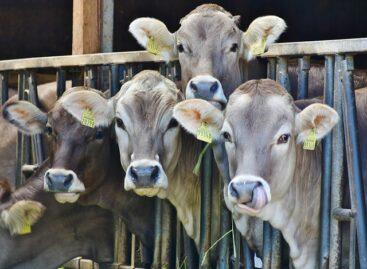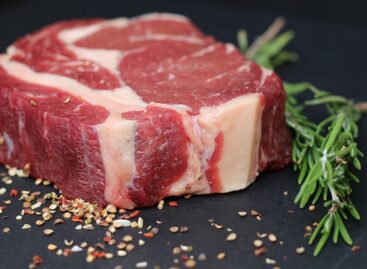International beef-trends keep changing
The Asian country is expected to import 2.2 million tonnes of beef in 2020.
In 2019, China has increased its beef consumption by 11% to reach 8.33 million tonnes, with per capita consumption jumping from 4.88 kg in 2016 to 5.95 kg in 2019. Statistical data shows that beef output has increased by 4% last year, reaching a total volume of 6.67 million tonnes, leaving room for beef import volumes of 1,66 million tonnes. That represents an increase of 60% in beef imports compared with 2018 and the trend is expected to continue this year as pig meat shortage appeared in the Chinese market due to the ASF crisis is pushing consumers to find alternatives for pork.
For 2020, analysts are expecting a total volume of beef imports of 2.2 million tonnes to cover the demand in the Chinese market. Even with a high impact reported in the market, due to lockdown amid coronavirus outbreak, China has imported 300,000 tonnes of beef in January and February, according to data presented by beef to China.
The situation is also acknowledged by Meat and Livestock Australia (MLA), who issued a report on the Chinese consumer needs in times of crisis and beyond.
During the Covid-19 crisis, 79% of Chinese consumers have increased home cooking, while only 4% have reported a decline in home-cooked meals. 32% of affluent Chinese consumers have reported an increase in beef consumption ad only 5% have reduced their intake.
“Meal preparation habits – increased scratch home-cooking with fresh produce and meat plus some trialling of new beef cooking methods:
– mandatory home isolation meant consumers relied mostly on home-cooking from scratch, interspersed with some ready-to-eat or ready-to-cook foods for convenience.
– most consumers report increased consumption of fresh meat and produce due to the important role these are believed to play in delivering health and nutrition, which in turn supports immunity.
– consumers mostly fell back on traditional, familiar beef dishes associated with winter, nutrition and comfort such as soups, wet slow-cook dishes and stir fry. However, a significant proportion broadened their repertoires to include some more western-style pan fry as well as, grilling and roasting.
– during home isolation, many consumers say they rediscovered the joy of cooking, and many younger ones did so for the first time, having more time and motivation to try different dishes and cooking methods for variety.
Role of red meat in diets – greater consumption of beef as a more nutritious, safer protein and key contributor to a healthy balanced diet:
– while our respondents were already regular beef consumers before COVID-19, during the outbreak a third reported consuming even more beef as well as lamb, and less pork, poultry and fish.
– these affluent, well-educated consumers prioritize beef over other proteins due to their understanding of its higher nutritional value, enabling it to better support overall health and immunity.
Meat purchase considerations – Higher priority on safety, quality, nutrition and country of origin which all underpin stronger health:
– pre-COVID-19, consumers’ top beef purchase considerations for home consumption were safety, freshness, quality and country of origin. The outbreak led them to place even more importance on these but particularly enhancing immunity, country of origin and naturalness.
– consumers turned away from buying frozen beef, preferring chilled and fresh product, which they consider more nutritious.
– a majority believe they will continue to pay more attention to health and immunity for themselves and their families after the outbreak ends, with meat such as beef and lamb playing a key role in delivering a nutritious, balanced diet,” shows MLA’s report. However, Australia’s beef market share may see a large decline this year, as the national cattle inventory is expected to drop by double digits in 2020. That may leave room for other beef exporters to enter the Chinese market. Over the first two months of this year, the total volume of China’s beef imports from minor sources was 11,457 tonnes, 82% higher than the volume reported in the same period last year. Ireland and the US were the top two minor countries to ship beef to China, followed by Ukraine, Kazakhstan, Bolivia, Panama, Namibia, and Hungary.
Related news
The number of cattle slaughters increased by almost a quarter
🎧 Hallgasd a cikket: Lejátszás Szünet Folytatás Leállítás Nyelv: Auto…
Read more >Shein is facing serious EU proceedings – the Chinese giant platform could pay a fine of up to billions
🎧 Hallgasd a cikket: Lejátszás Szünet Folytatás Leállítás Nyelv: Auto…
Read more >Grupo Carrefour Brasil Introduces Sustainable And Traceable Beef
🎧 Hallgasd a cikket: Lejátszás Szünet Folytatás Leállítás Nyelv: Auto…
Read more >Related news
Egg prices up nearly one-third
🎧 Hallgasd a cikket: Lejátszás Szünet Folytatás Leállítás Nyelv: Auto…
Read more >Too many gifts, too much food: our holiday excesses are putting a serious strain on the environment
🎧 Hallgasd a cikket: Lejátszás Szünet Folytatás Leállítás Nyelv: Auto…
Read more >You can now pay utility bills with qvik
🎧 Hallgasd a cikket: Lejátszás Szünet Folytatás Leállítás Nyelv: Auto…
Read more >






